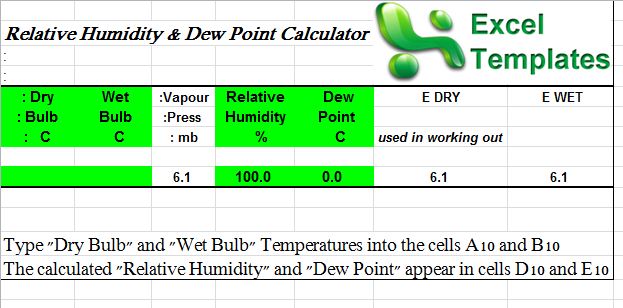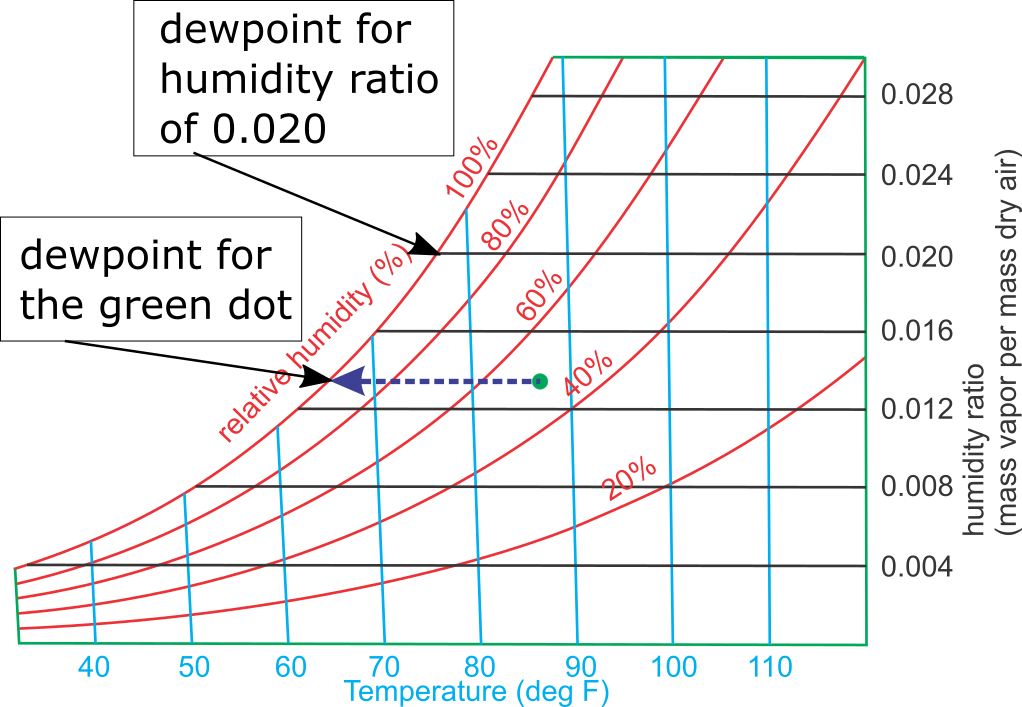


Measurements of the temperature and pressure in the saturator yield T DP and p. In these vessels, the gas flows over water inside a long channel, mixing the gas with water vapor at its saturated vapor pressure.
#Pressure dew point calculator for compressed air generator
The generator features two high-pressure saturators. Knowledge of f w( T DP, p) for CO 2 is essential for designing this cooling process.įor determining f w( T DP, p) for a gas, the TMG has built a humidity generator that is capable of saturating the gas with water at pressures up to 7 MPa and temperatures from 1 ☌ to 85 ☌. The simplest method for drying the captured CO 2/H 2O mixture is to cool it until sufficient water condensation occurs. Also, compression and transport of CO 2 require more energy when it is moist. Water condensation causes corrosion in the pipelines and other conventional carbon-steel materials that it contacts. In this process, a sufficient amount of water must be removed from the captured CO 2/H 2O mixture before it is ready for compression, transport, and storage. One example of an industrial process in need of knowledge of this relation is Carbon Capture and Sequestration, which needed the knowledge for CO 2. This quantity varies with both T DP and p. This dew point calculator can be used to explore the relationship between dew point, temperature, and relative humidity, without the need for a dew point chart. To relate T DP to x and p, a thermodynamic quantity called the water-vapor enhancement factor ( f w) must be known. This relation is a property that is important to industrial processes involving the gas. NIST has developed a facility for determining the relation of the water dew point temperature T DP to the water mole fraction ( x) and pressure ( p) in a gas. Knowledge of this relation is important for the effort to perform Carbon capture and sequestration (CCS) in power plants. The NIST Thermodynamic Metrology Group (TMG) used its standard gravimetric hygrometer as part of a facility for making high-accuracy measurements of the dew point temperature for water in compressed CO 2 as a function of mole fraction and pressure. The paper reporting the results is provided here. If we know the relative humidity instead of T dew, we use P v = RH × E s(T), evaluating E s at the air temperature ( T).Schematic of high-pressure humidity generator. If we know the dew point, we use the P v = E s(T dew) equation, evaluating E s at the dew point (T dew). In either case, we use the following polynomial (suggested by EMD International A/S) to calculate E s: There are two ways of calculating P v, depending on whether we know the dew point ( T dew) or the relative humidity ( RH):

(PDP) Explained in compressed air systems Relative Humidity - Calculation. This calculator uses the previous equation to calculate the density of moist air. When air has reached the dew-point temperature at a particular pressure. Flow & Consumption Meters (Air & Gas) Flow & Consumption Meters (Liquids & Steam) Dew Point Meters. R v - Specific gas constant of water vapor ( 461.495 J/(kg K)).R d - Specific gas constant of dry air ( 287.05 J/(kg K)) and.P v - Partial water vapor pressure, in Pa.P d - Partial pressure of dry air, in Pa.Saturation pressure at dew point temperature. We can extend Dalton's law to the density of gas mixtures, such as the mixture of air and vapor (moist air): Calculate online thermodynamic properties of moist (humid) air based on Hyland and Wexler formulation. With partial pressures, we refer to the pressures each gas would exert if it existed alone at the mixture temperature and volume. "The pressure of a gas mixture is equal to the sum of the partial pressures of each gas." To calculate the density of moist air, this calculator uses a model based on Dalton's law for partial pressures, which says:


 0 kommentar(er)
0 kommentar(er)
